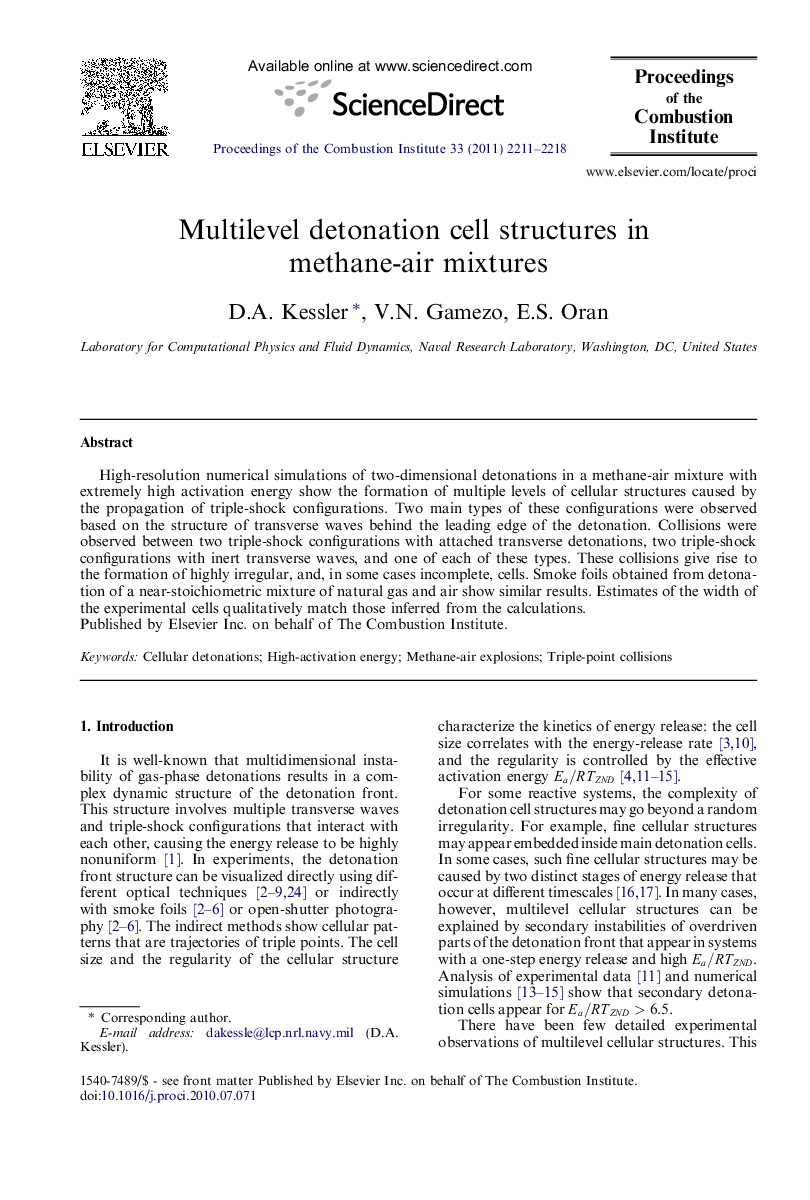| Article ID | Journal | Published Year | Pages | File Type |
|---|---|---|---|---|
| 240670 | Proceedings of the Combustion Institute | 2011 | 8 Pages |
High-resolution numerical simulations of two-dimensional detonations in a methane-air mixture with extremely high activation energy show the formation of multiple levels of cellular structures caused by the propagation of triple-shock configurations. Two main types of these configurations were observed based on the structure of transverse waves behind the leading edge of the detonation. Collisions were observed between two triple-shock configurations with attached transverse detonations, two triple-shock configurations with inert transverse waves, and one of each of these types. These collisions give rise to the formation of highly irregular, and, in some cases incomplete, cells. Smoke foils obtained from detonation of a near-stoichiometric mixture of natural gas and air show similar results. Estimates of the width of the experimental cells qualitatively match those inferred from the calculations.
